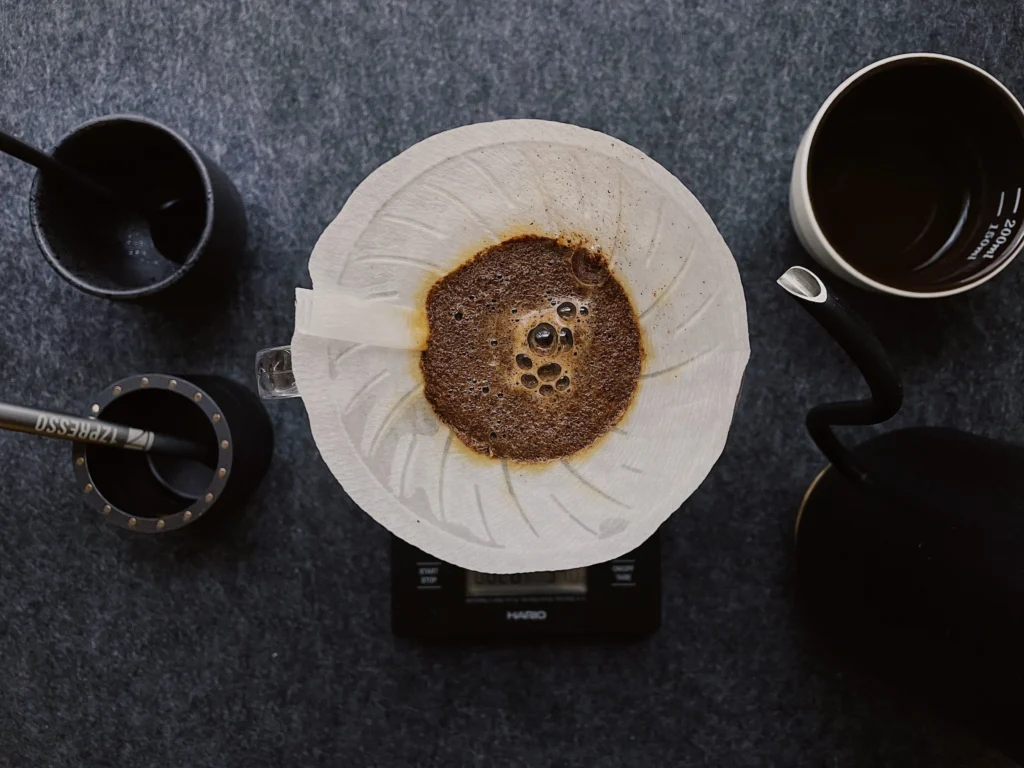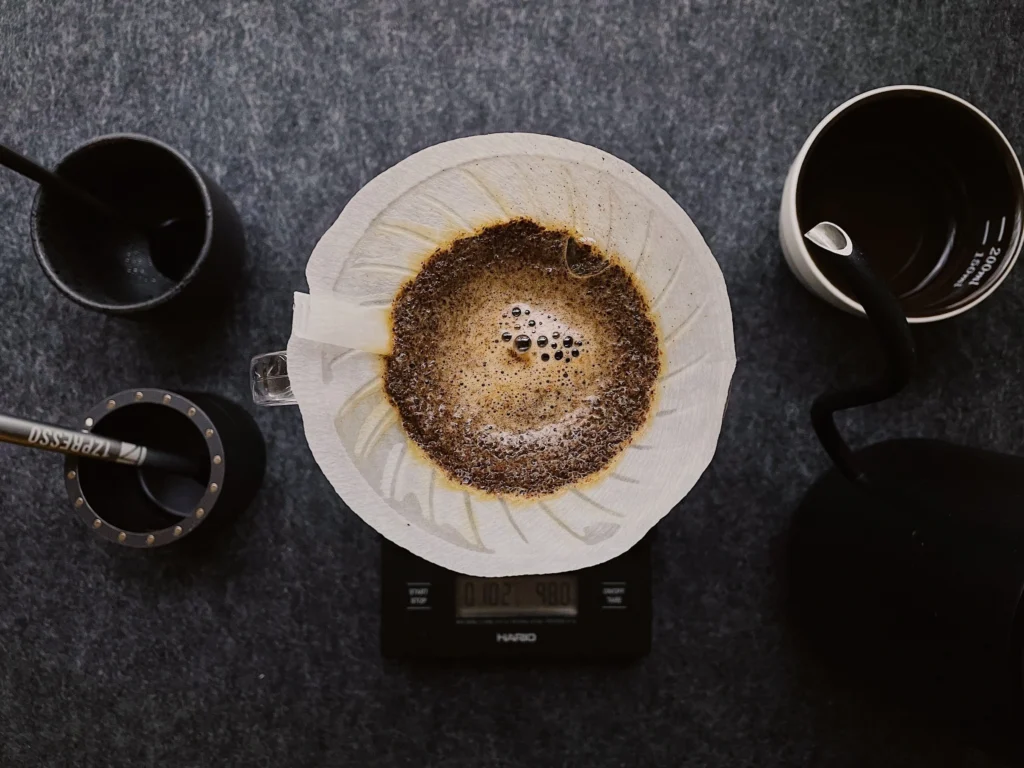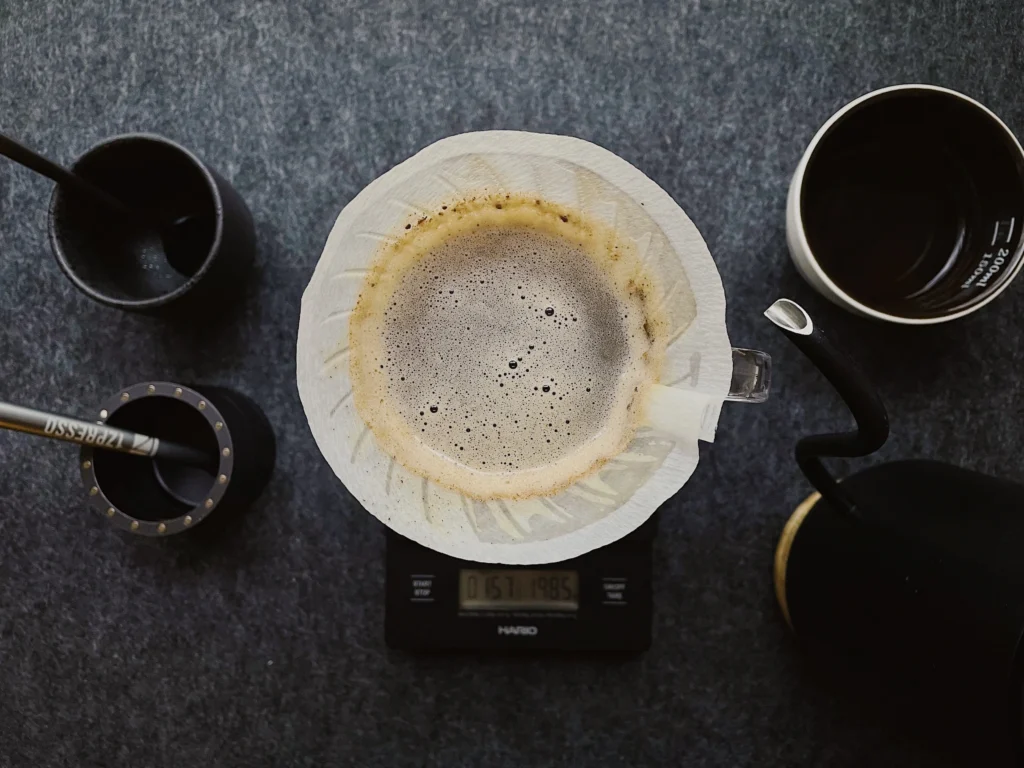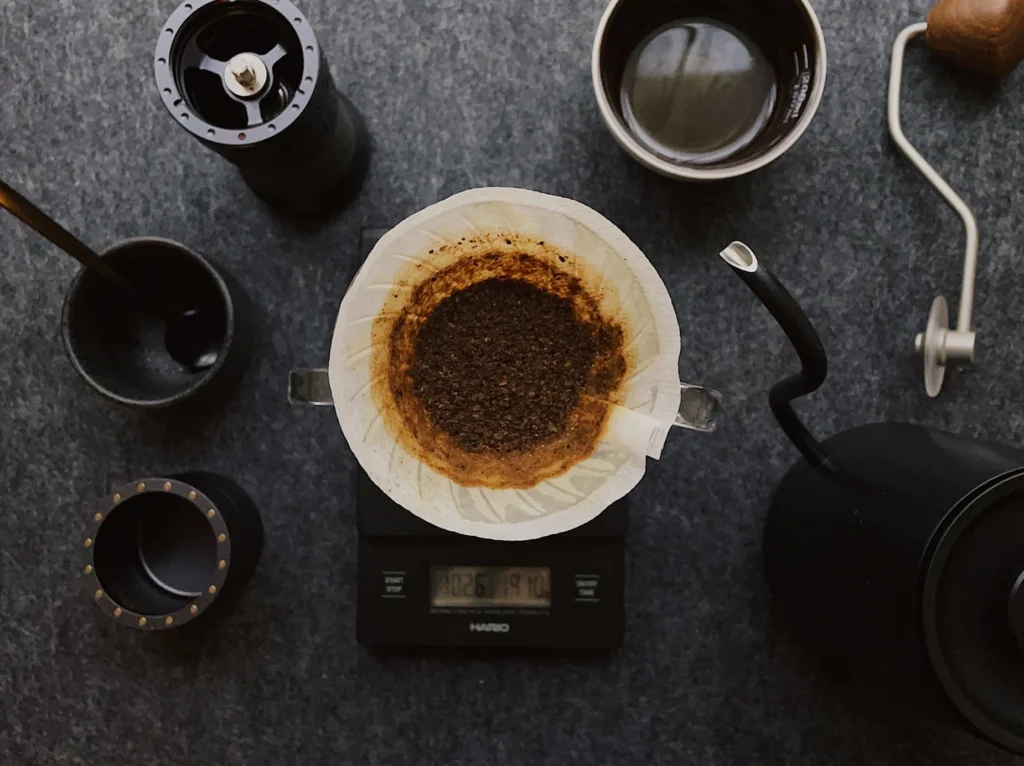The Hario V60 has become a staple in the coffee industry since the 2010s during the start of third-wave coffee. More cafes and baristas adopted the V60 as a method of brewing specialty coffee as it began to be widely used in all parts of the world.
In this article, we will help you get started on how to brew better pour over coffee with the V60 and overcome common challenges you might face.
About Hario V60
Hario Co. Ltd has been known to manufacture laboratory glassware and to develop heat-proof glassware. The word ‘Hario’ is translated as ‘King of Glass’, and they began to expand their expertise in heat-resistant glassware to the consumer market during the 1950s.
It was said that a Hario employee thought of an idea to develop a brewer for pour-over coffee. This was then developed into the iconic V60 and known for its V-shaped body and 60-degree angle. The V60 was later improved with spiral ribs to enhance the flow and extraction of the coffee grounds. The larger hole at the bottom also allows for a better flow rate and control for pouring.
Today, the Hario V60 is still being used by enthusiasts and professional baristas alike. Since 2005, the Hario V60 has expanded into a range of different materials, such as the metal, ceramic, plastic, and glass drippers. The plastic V60 is a great brewer to begin with and one that can serve you for a long time.
Popular V60 Brewing Methods
There are many V60 Brewing Recipes that have been developed since its inception. Many cafes have developed their own standard recipes and championship baristas have also developed theirs as well. The V60 can come across as confusing for a beginner that is looking for a simplified approach.
To begin with, here are the top 3 V60 methods that you will come across:
The James Hoffman V60 Recipe is a 4-pour technique that is up to a 3-minute total brew time. The Scott Rao method emphasizes more on getting an even extraction with swirling with the spoon and flattening the coffee bed at the end of the process. While the Tetsu Kasuya method breaks down a 40%-60% rule of the total brew weight into 5 pours to achieve an optimum extraction.
These methods are good to understand but can be convoluted for someone who wants to brew with simplicity in mind. We thought of combining some of the concepts into a 3-Pour 1 Cup V60 Recipe that is simple and easy to understand.
Kubomi Method, Kettle & Grinder
Firstly, if you have heard of the Kubomi method (a preparation for the coffee grounds before the bloom), we do not think it has as much of an impact towards the taste. However for beginners that are still not used to handling the kettle, it is a good way to start as you do not need to swirl the kettle during the bloom phase, but instead pour your water right into the centre to evenly saturate your grounds.
Regarding kettles, we think it is better to own one with a finer sprout than the Hario Buono Kettle. Also it’s good to have one that you can dial in at the right temperature. This makes a difference because you can have more control over the pouring speed and not cause too much turbulence.
On grinders, this will impact your brew as well as your water. So, investing in a high-quality burr grinder such as the 1Zpresso or Commandante will be a better choice. If you have an electric grinder that provides fine settings for pour over coffee, that will be great as well.
Hario V60 – 3 Pour Method
Brewing Breakdown
Bloom

[0’00 – 0’30] Evenly saturate your coffee with 3x the weight of the coffee dose. C02 gas is released with the formation of bubbles around the surface.
1st Pour

[0’30 – 0’55] Gentle, slow pour with concentric circles up to 100g. Allow the water to saturate the grounds for a while.
2nd Pour

[1’10 – 1’50] The final goal is to saturate the grounds evenly. Pour with circular clockwise motion and knocking off the grounds around the corners of the V60. Give a spin at the end to flattened the coffee bed.
End Result

The final flatbed should appear sandy, not muddy. If you’re a perfectionist, create one that’s aesthetically pleasing.
Improve Your V60 Brews
The taste of your coffee might not be the outcome that you expect. Here are some common problems and ways you can troubleshoot.
- Hollow taste – Try a finer grind size (under extracted)
- Bitter taste – Try a coarser grind size (over extracted)
- Diluted / Light – The drawdown could be too quick, adjust the grind setting or up dose by a gram
- Muddy taste / Lacks acidity – Water quality or poor quality grinder could affect this. Also, beans past 1 month from roast date.
- Lacks aftertaste – The bloom or grounds might not be well saturated
- Flavour ‘seems off’ – The water temperature could be the cause
If you are tweaking your brew, adjust one variable and check the results. For example, change the grind setting while leaving the temperature and technique unchanged. Doing this methodically and recording it down in a brew journal would help you get on the right track. Check out AOB’s Notion Template and feel free to use it as your brew log.
If you want to take things a step further, choose a better paper filter such as the CAFEC T-90 for Medium Roast paper filters. You can also improve your water quality with Third Wave Water or creating a water recipe.
Conclusion
The Hario V60 is one of the best pour over coffee dripper to have because of its simplicity and overall taste results. We like to brew Ethiopian naturals with the V60, as it provides a great balance of body, mouthfeel and taste.
If you are starting to perfect the V60 technique, we recommend practicing your pouring technique with your kettle and getting used to handling the speed of the water. Creating a perfect brew requires consistent practice as well, besides good equipment and beans.
As a final note, we will explore more on other Hario models such as the Hario Switch Immersion Dripper and Hario V60 Metal Dripper to compare it with the Hario V60 Plastic model. Stay tuned on our blog for more!
Thanks for reading. We hope you have gained some valuable insights from this post. Follow Art Of Brew on Instagram and Twitter or share your thoughts in the comments below.